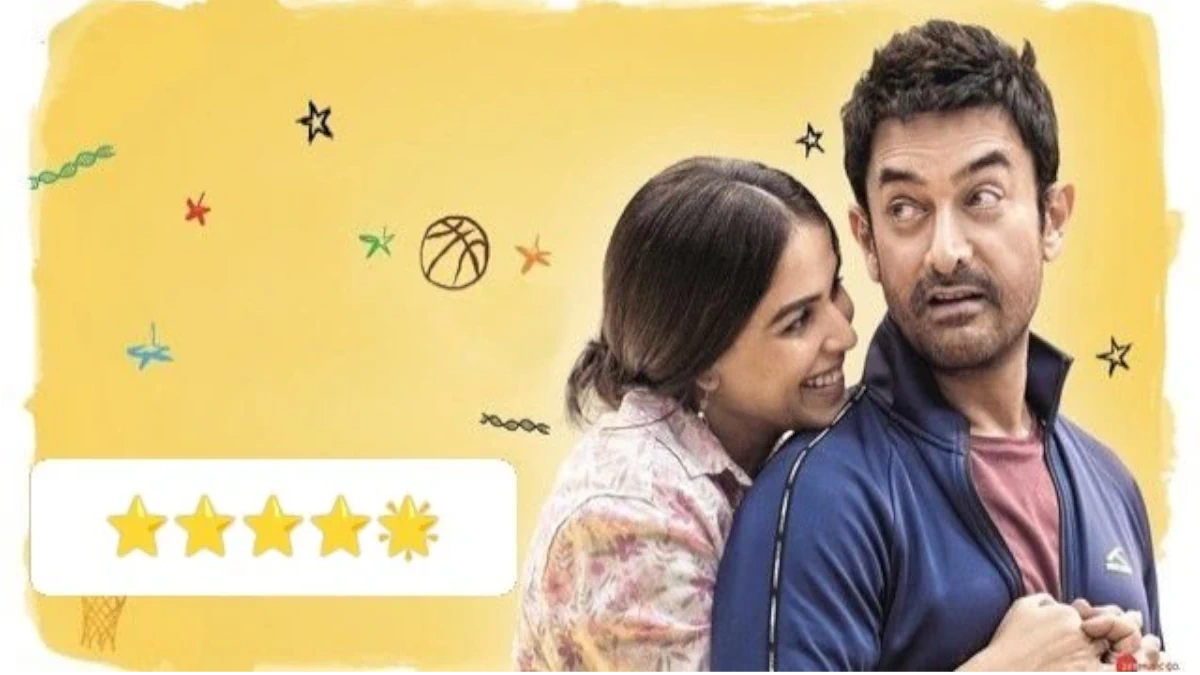Sitare Zameen Par: Aamir Khan’s Emotional Masterpiece Redefines Children’s Cinema in 2025
Aamir Khan is back. After a brief hiatus following the mixed reception of Laal Singh Chaddha, the master storyteller returns with Sitare Zameen Par (2025) — a spiritual successor to the 2007 classic Taare Zameen Par. This time, the focus is broader, deeper, and more urgent. If Taare was about dyslexia and misunderstood children, Sitare is about the mental health crisis among youth, the unforgiving pressures of the education system, and the power of emotional connection.
A Title with Legacy
The title Sitare Zameen Par immediately evokes nostalgia. It reminds audiences of Ishaan Awasthi’s tearful struggles and Ram Shankar Nikumbh’s warm guidance. But this isn’t a sequel in the conventional sense. It’s a thematic extension. Where Taare Zameen Par zoomed into one child’s world, Sitare opens the lens wider — capturing an entire generation caught between dreams and deadlines.
Plot Summary: More Than Just a School Drama
Set in a government-run boarding school nestled in the foothills of Himachal Pradesh, the story follows Kabir Sharma, a gifted 12-year-old who silently struggles with anxiety and selective mutism. He is brilliant in math and art but terrified of failure. His classmates come from varied backgrounds — a bullied Dalit student, a migrant child from Assam, a Muslim girl fighting parental pressure to drop out, and a tech-addicted rich kid with ADHD.
When Aamir Khan enters the scene as Anand Sir, a temporary counselor sent by an NGO, things begin to change. He doesn’t teach from textbooks but from life. He listens more than he lectures. He uses storytelling, music therapy, movement classes, and empathy exercises to slowly peel back the layers of fear the students have built.
In a crucial moment, he says, “We’re too focused on the sky to notice the stars already shining on earth.” And that line sticks with you long after the film ends.
Direction: Aamir at His Best
Aamir Khan directs with heart and restraint. He never lets melodrama overpower message. The screenplay, written by Amole Gupte, is layered with metaphors and realism. Khan plays Anand Sir with quiet intensity, letting his silences do the talking. The film avoids the trap of making him a savior. Instead, the real heroes are the children.
Performances: A Stellar Young Cast
Casting director Mukesh Chhabra deserves praise for assembling a cast of non-mainstream, fresh-faced child actors who deliver gut-wrenching performances:
- Ishaan Mishra as Kabir is hauntingly good. His expressive eyes tell stories words cannot.
- Zoya Qureshi as Nasreen brings strength and poise to a girl on the verge of giving up.
- Samarjit Gogoi as Rabi from Assam is endearing and heartbreaking.
Supporting performances by Konkona Sen Sharma as the stern principal and Rajkummar Rao in a cameo as a concerned father add depth.
Music: Emotions in Every Note
Composed by Shankar-Ehsaan-Loy, the soundtrack is the soul of the film. Songs like:
- “Chhoti Si Duniya” — a gentle lullaby that plays during the children’s therapy sessions
- “Roshni Tu Hai” — a rousing anthem of self-acceptance
- “Chupke Se Bolo” — a duet that sensitively handles Kabir’s mutism
Lyrics by Prasoon Joshi are poetic without being preachy.
Themes: The Stars Within
- Mental Health Awareness: Unlike tokenistic portrayals in past films, Sitare Zameen Par delves deep into childhood anxiety, panic disorders, ADHD, and the stigma around therapy.
- Educational Pressure: The film criticizes rote learning and standardization. Anand Sir encourages creative thinking and emotional intelligence.
- Social Diversity: The kids represent a microcosm of India — caste, religion, class, geography. Their unity is a message of inclusivity.
- Parenting in Modern India: Several parallel stories explore the disconnect between well-meaning parents and their kids’ emotional needs.
- Healing Through Art: Music, painting, drama, and poetry are shown not as extra-curriculars but as life-saving tools.
Cinematography and Visuals
Shot by Avik Mukhopadhyay, the film is visually stunning. Misty mountains mirror the kids’ inner turmoil. Sunlight breaking through clouds marks emotional breakthroughs. Handheld shots during therapy scenes add intimacy.
What Sets It Apart
In a Bollywood landscape filled with biopics, action thrillers, and remakes, Sitare Zameen Par dares to be soft, slow, and sensitive. It doesn’t seek to entertain alone but to enlighten. It’s not a film that ends with claps; it ends with conversations.
Public Reception and Critical Acclaim
Released on June 28, 2025, the film opened to packed theaters and rave reviews:
- The Indian Express: “Aamir Khan once again becomes the voice of voiceless children.”
- NDTV: “A powerful, poignant, and necessary film for parents, teachers, and students.”
- Film Companion: “Not just a movie, but a movement.”
Social media lit up with stories of viewers breaking down, sharing their childhood struggles, and thanking Khan for shedding light on topics so often ignored.
Educational Outreach and Social Impact
In a groundbreaking initiative, Aamir Khan Productions partnered with education NGOs to screen the film in 500 rural schools and urban slums. Toolkits for teachers and parents have been released alongside the movie, with QR codes included in the end credits.
Box Office and Awards Potential
With an opening weekend collection of over INR 100 crores, the film is a commercial success. But more than box office numbers, it’s likely to sweep awards for Best Film, Best Direction, Best Child Actor (Ishaan Mishra), and Best Story.
Final Word: A Must-Watch
Sitare Zameen Par is not just a film — it’s a mirror. A mirror for parents to look into their parenting style. A mirror for educators to reflect on their teaching methods. And a mirror for society to see the brilliance of its children.
Aamir Khan reminds us once again why he’s more than a superstar. He’s a storyteller with a conscience.
If Taare Zameen Par opened our eyes, Sitare Zameen Par opens our hearts.

